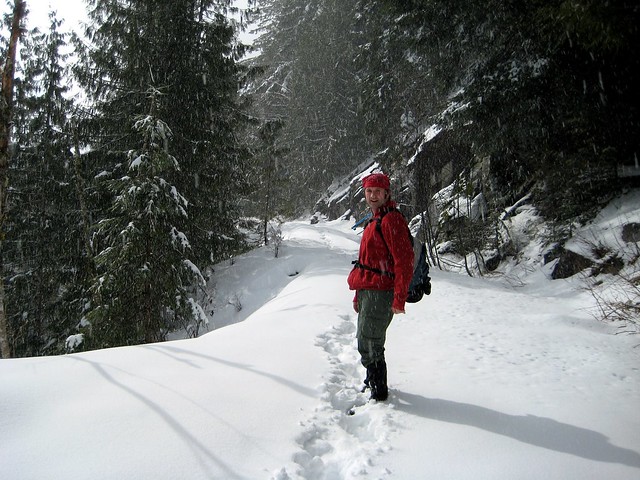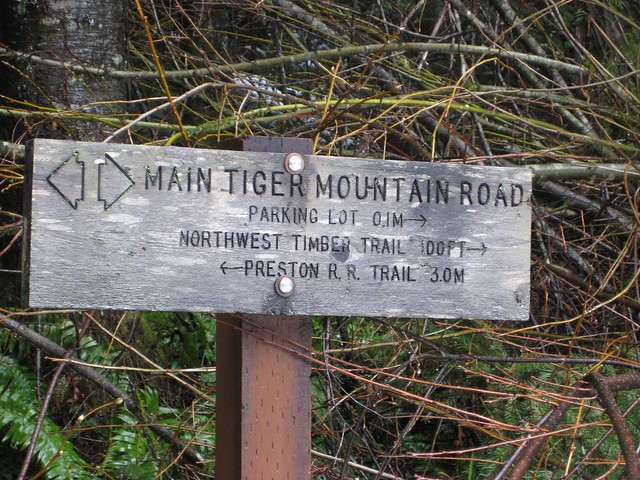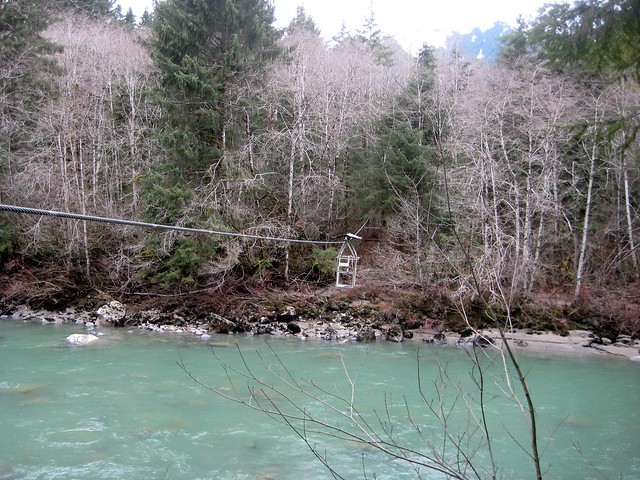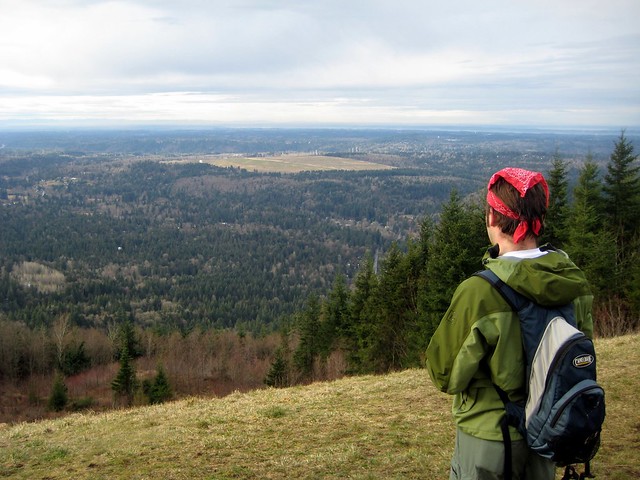Our Hiking Time: 4h 10m
Total Ascent: 700ft
Highest Point: 1600ft
Total Distance: 10.5 miles
Location:
N 47° 29.4000, W 121° 41.2800
Required Permit:
Discover Pass
Difficulty: Easy

Weather sometimes conspires to force us down trails we’d otherwise been avoiding for months. This week, late snows shied us away from more rugged expeditions into the wilderness, and instead pointed us squarely at the CCC Road. Our apprehensions about trekking down a logging road were confirmed when we noticed that even the ever-gushing Harvey Manning is a bit lackluster in his description of the route. Still, because the 22-mile road is central to many other hikes in the Middle Fork area, we thought it justified at least an exploration.
Running beneath
Mt. Teneriffe and
Green Mountain, the CCC Road

snakes its way toward Taylor River. First blazed by the Depression-era Civilian Conservation Corps in the 1920s to help facilitate access for timber and mining interests, it thrived as the only reliable access to the area before being supplanted by the more modern Middle Fork Road (FR 56). Although it was not so long ago that the area was a haven for a wide variety of unsavory activities, the road is now largely closed to motorized vehicles and is in the middle of the slow transition from road to trail. The clear cutting from the 1960s is still apparent in young forest that lines the trail, though enough time has passed that the ugliness has largely been obscured.
However, much of the trail from the south is still very much a road, with the first mile or so still being actively used as access to private property. The second mile is a wide swath of Douglas Fir monoculture, a legacy of the callously efficient timber practices of fifty years ago. At about 2 1/2 miles, note the trail up to Green Mountain on your left, marked by a high rusty gate barring entrance to a long-abandoned timber road. Continuing on, the road starts a very gradual descent toward the Middle Fork Snoqualmie. Streams and rivulets of various sizes pass through culverts

or cut across the trail for the next few miles, as the forest matures and diversifies. Alders and cedars begin to appear alongside the Douglas Firs, and the road begins to narrow and become something more akin to a trail. The feeling that we’d somehow left a logging road for a hiking trail was helped along by pleasant views and engaging terrain. Our spirits thus bolstered, we were almost reluctant to stop at the half-way point just past Big Blowout Creek, where a spur connects the CCC road to FR 56.
The CCC Road offers some stunning vistas and expanses, showcasing Russian Butte, Mt Garfield,
Bessemer Mountain and
Mailbox Peak as well as the valley floors they preside over. Unfortunately, much of the approach to these views was plodding and flat, great for the biker or equestrian, but a lot of mundane and unimpressive ground to cover on foot. Although, the same snow that forced us onto the trail reminded us that during the winter months, the road could be a great introduction to snowshoeing – most of the trail is flat and friendly, as well as being comfortably close to civilization. Beyond some light snowshoe experimentation, however, if you’re just out for a pleasant walk in the woods, we recommend you skip the west end of the CCC Road and access the route either via the spur off of FR 56 or from the east end.
The western entrance to the CCC Road can be reached by taking

Exit 32 off I-90 and heading left on 436th Ave. Proceed on 436th Ave to North Bend Way and turn left. Watch for Mt. Si Road to appear on your right in about a half-mile. Follow Mt. Si Road for about 5 miles, past
Little Si and
Mount Si to the school bus turnaround that marks the
Mt. Teneriffe trailhead as well as the end of the county-maintained road. Manning suggests you park here and huff it the mile to the gated CCC Road, as this is the closest designated parking area. We chose instead to drive the graveled road to the gate and park unobtrusively on the shoulder. Pile out and hit the trail, the sooner you start the sooner you’ll put the less-enjoyable first miles behind you. - Nathan
Print Google Directions >>

 We’re excited to announce that we are now working with Backpacker Magazine to help share and promote hikes around the Pacific Northwest. In recent years, Backpacker has been expanding their focus beyond multi-day backpacking treks to encompass shorter day hikes close to major cities. When editors at the magazine went looking for local hikers to help catalog days hikes, they quickly found hikingwithmybrother.com and enlisted us to lend a hand. Not only will we be sharing our hikes with the Backpacker.com community, occasionally our submissions will be presented as a featured “Destination” by Backpacker Magazine.
We’re excited to announce that we are now working with Backpacker Magazine to help share and promote hikes around the Pacific Northwest. In recent years, Backpacker has been expanding their focus beyond multi-day backpacking treks to encompass shorter day hikes close to major cities. When editors at the magazine went looking for local hikers to help catalog days hikes, they quickly found hikingwithmybrother.com and enlisted us to lend a hand. Not only will we be sharing our hikes with the Backpacker.com community, occasionally our submissions will be presented as a featured “Destination” by Backpacker Magazine.












